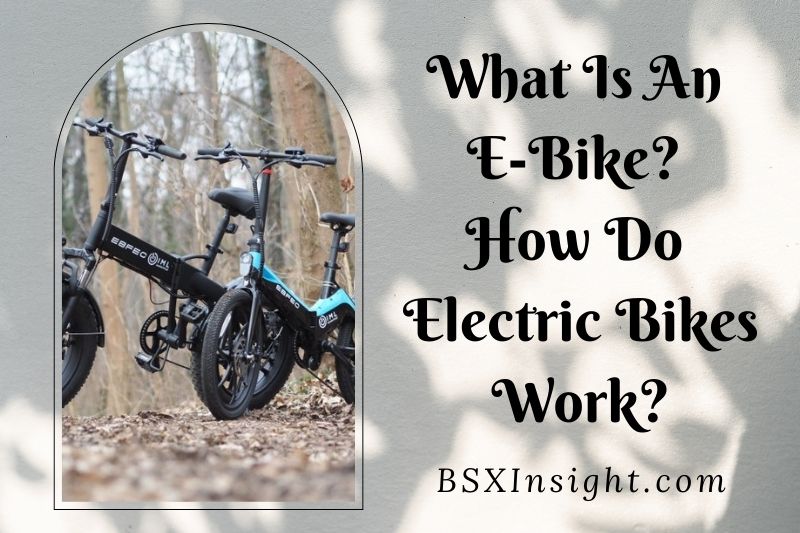Electric bikes, also known as e-bikes, are a type of bicycle that is powered by an electric motor. These bikes typically have a battery pack that can be charged and used to power the motor. E-bikes can be ridden like regular bicycles, but they also have the option to use the motor for assistance when pedaling. This can make riding up hills or longer distances much easier than on a regular bike.
Keep dive into our post to learn in-depth about how do electric bikes work and much useful information.
What Is An E-bike?
Although a scooter or electric motorcycle may come to mind when someone hears the word “electric bike,” they actually appear quite different. Imagine a typical bicycle and then add a few electrical parts to it, such as a controller, a battery, and a motor, all of which are smoothly incorporated into the design. The basic components of every electric bicycle on the market are these!
How Do Electric Bikes Work?
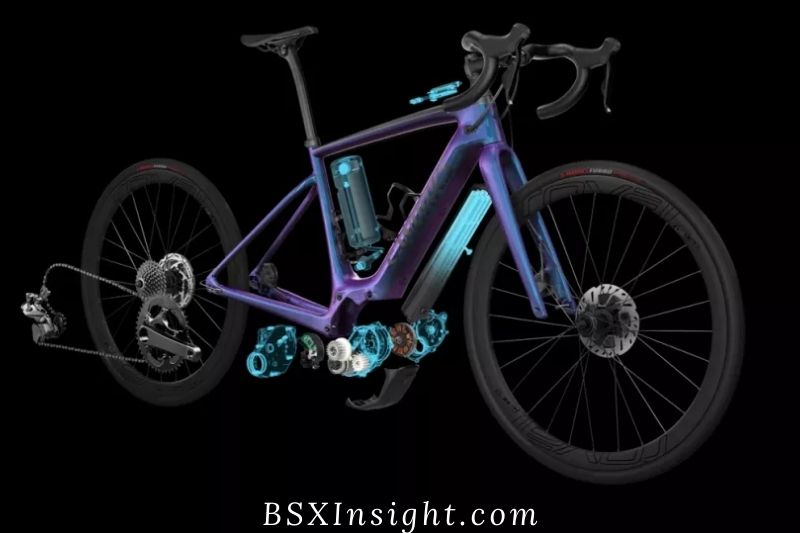
The pedals of electric bikes are assisted by a motor, making cycling less strenuous. Depending on the design, the bike may be able to move ahead on its own power from the motor or it may need your help to pedal.
Electric bicycles should not be confused with motorcycles. The battery and electric motor don’t last as long as an engine that runs on gasoline.
However, because they don’t produce toxic exhaust while you ride them, e-bikes are better for the environment. Because you must exert effort to move the bike, they are also a healthy choice for you because doing so will increase your cardiovascular fitness.
Even though you might believe that electric bikes have no top speed, this is untrue—a motor gives them one. You will have a speed cap on how fast you may go with motor assistance since federal restrictions under the 2002 Consumer Product Safety Act regulate the definition of low-speed electric bikes. The maximum speed for your bike may range from 20 to 28 miles per hour (mph).
In states that specify what an electric bicycle is, there are three classes of e-bikes. Consult your state’s laws to learn whether any restrictions apply to the operation of particular e-bike classes for certain age groups.
Class 1: The rider receives assistance from these motorcycles as they pedal up to 20 mph.
Class 2: These bicycles are only permitted to utilize motors to accelerate them up to 20 mph.
Class 3: Up to 28 mph motorized assistance is only available when the user pedals on the quickest motorcycles.
Electric bikes differ from conventional bicycles in three key ways: the battery, the motor, and its controller, and the sensor.
Simplifying Daily Routines
If you’re looking for a hassle-free mode of transportation, an electric bike is a fantastic choice.
Those concerned with environmental impact can also benefit greatly from them. An electric bike is an excellent choice for those in search of an alternative mode of transportation.
Down To The Basic

The basic structure of a standard electric bike is similar to that of a conventional bicycle. The only other components needed are an electric motor, battery, sensor, and electronic display to get this thing going. Every single one of our electric bikes comes equipped with a pedal-to-assist feature.
A rider pedaling activates the motor in this design. Still working out while enjoying a more comfortable ride, this is a win-win. Following this section, you will learn the basics of how an electric bike works.
The Battery
The motor of an electric bicycle is powered by a battery. Typically, you’ll find the engine in the hub of the front wheel. A controller links the battery to the motor. The controller controls how much juice the motor receives from the battery. The harder you pedal, the more power you send to the motor.
When you pedal faster and harder, the motor produces more force. Typically, a lithium-ion battery is used as the power source. Compared to other battery types, lithium-ion cells perform exceptionally well and last for years. They cost a lot of money.
The electric bike’s battery is the most costly component. To recharge the battery, simply connect it to a standard electrical outlet. Charging a battery typically takes four to six hours. Assuming a full charge, your range will be between 20 and 30 miles.
The Sensor
The sensor on an electric bike reads how fast you’re going. The sensor triggers the brakes if the bike’s speed exceeds a predetermined threshold. A display mounted to the handlebars is linked to the sensor as well. Information such as the rider’s speed, remaining battery life, and other stats can be displayed here.
The Motor
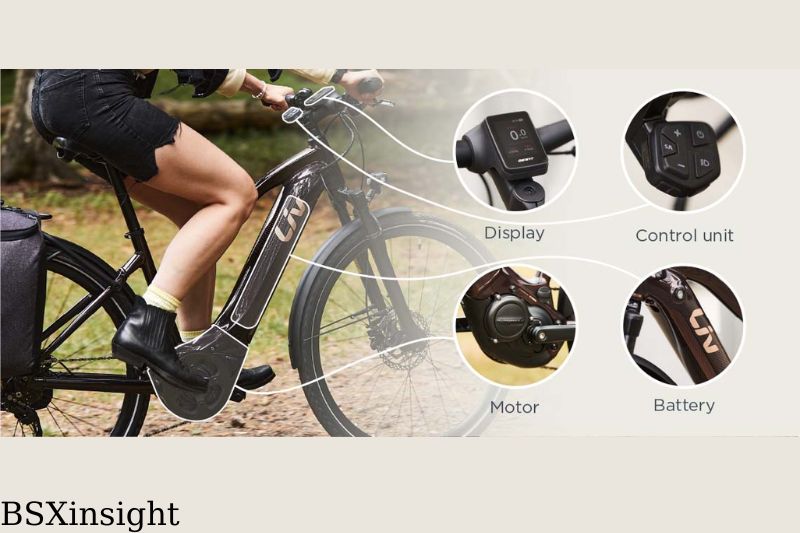
The electric motor of an electric bike is charged by a battery. Some models have a mid-drive motor that sits between the pedals, but most have the motor in one of the wheel hubs at the front or back.
The motor propels the bike’s wheels, making it easier for the rider to pedal. The motor on most electric bikes is activated by a pedal assist sensor, which also cuts power when the rider stops pedaling.
Learn more about the components that distinguish an e-bike from a traditional bicycle now that you are aware of what they are.
Explaining Electric Bike Wattage

One element of the battery power in your bike is the watts. Wattage provides information on the potential speed and performance of your bike, together with voltage and amp-hours. It will be easier for you to determine how long you can ride your bike before you need to recharge it if you are aware of the distinctions between wattage and watt-hours.
What Is Wattage?
The power a motor produces is referred to as wattage. Wattage will be listed beside the motor power together with its peak and nominal powers. These ratings assess the motor’s typical operating capacity and ideal computed value, respectively.
Peak power is the motor’s maximum output at full throttle and under optimum circumstances. Because some power is wasted due to friction and other factors, your engine will probably never achieve this value.
Manufacturers list the nominal wattage to give you an idea of the actual power you will receive from the motor. The nominal wattage will typically be 75% of the maximal working power at the highest power levels. This value, which you can see listed with motor power as the second number, represents real consumption. When computing watt-hours, use this amount.
Watt-hours indicate the maximum speed your e-bike is capable of traveling as well as how long its particular motor can operate without needing to be recharged.
Why Is Wattage Important for an Electric Bike?
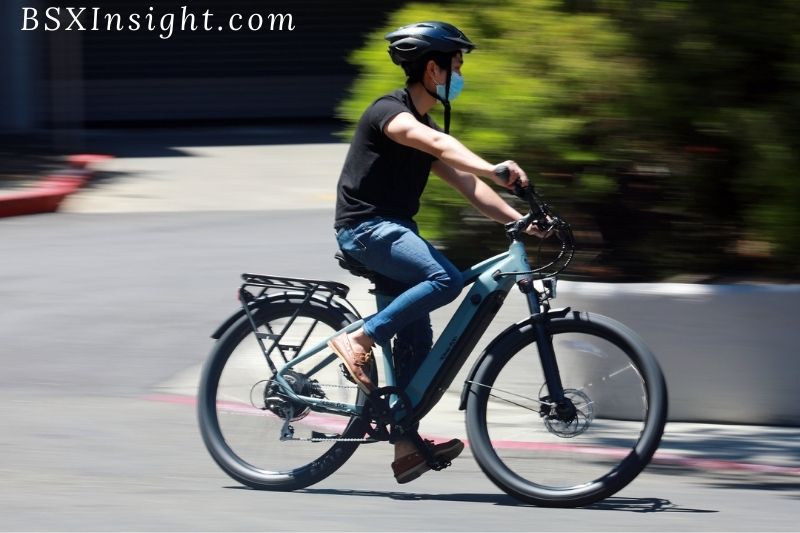
You may determine the watt-hours for your bike using the motor power wattage. A battery that can hold its charge for a longer period of time is necessary for motors that produce more watts.
The voltage of the battery multiplied by the amps of the motor controller results in watts. For instance, a bicycle with a 52-volt battery and a 20-amp controller will provide 1,040 watts of optimum power.
The calculated power is 1,040 watts at 52 volts and 20 amps.
By dividing this amount by 0.75, or 75%, you may determine the nominal motor wattage.
1,040 x 0.75 = 780 watts nominal power
By dividing the battery’s voltage by its amp-hours, you may determine watt-hours. For instance, a battery with 52 volts and 13 amp hours will output 676 watt-hours.
52 volts x 13 amp-hours = 676 watt-hours
Divide the watt-hours by the nominal motor wattage to get how long your bike’s battery can operate at full throttle. Divide 676 watt-hours by 780 nominal watts for the aforementioned example.
676 ÷ 780 = 0.867 hours
To determine the battery’s remaining time in minutes, multiply this amount by 60.
0.867 hours x 60 minutes = 52 minutes
This figure depicts riding constantly at full power. By cycling more and utilizing the engine-less frequently, you can extend the life of your batteries. The overall payload, average speed, tire pressure, and many other variables all have an impact on the riding range and battery life. E-bikes should complement your biking abilities rather than replace them.
Explaining Electric Bike Voltage
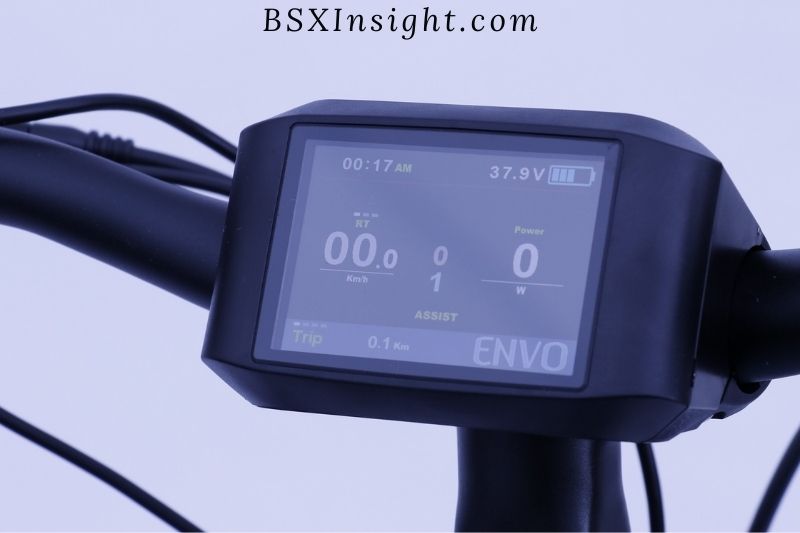
One measure of your bike’s battery strength is its wattage. Wattage, together with voltage and amp hours, gives you a sense of your bike’s potential for speed and performance.
To determine how long you can ride your bike before needing a recharge, you should be familiar with the concepts of wattage and watt-hours.
What Is Voltage?
One measure of a motor’s efficiency is its wattage, which indicates its power output. Both the peak and the nominal wattage are specified alongside the motor’s power. Ideal calculated value and typical operating capability are used to gauge the motor’s actual performance.
Full throttle, under ideal conditions, is when a motor’s peak power is reached. Because of losses due to friction and other factors, your motor will likely never reach this value.
The manufacturers usually list the nominal wattage to give you an idea of how much power you can expect to get from the motor. At maximum output, the nominal wattage is typically 75% of the maximum possible output. The second number associated with motor power is this one, and it’s the one that corresponds with actual consumption. Put it into your watt-hours calculator.
Your e-top bike’s speed and range, depending on the motor it has, are both determined by the watt-hours its battery can hold before needing to be recharged.
Why Does Wattage Matter for an E-Bike?
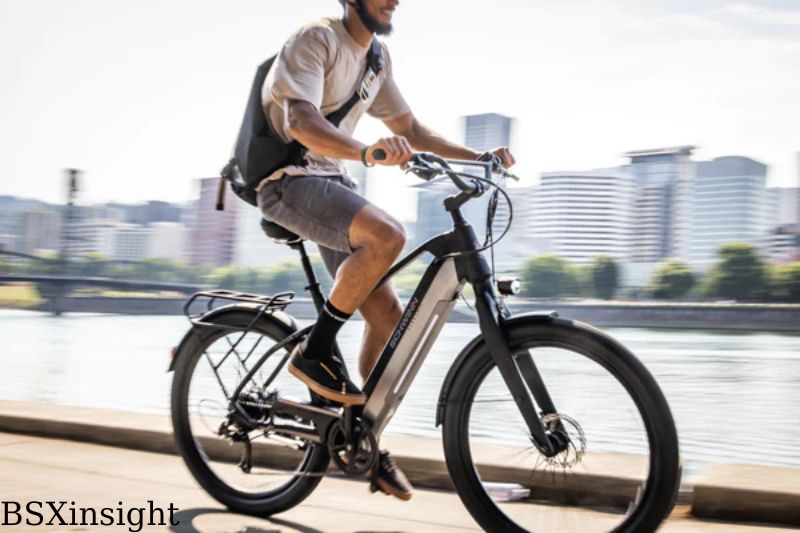
You can figure out how many watt-hours your bike’s motor uses by looking at its wattage. A more powerful motor will necessitate a battery that can hold its charge for a longer period of time.
The number of watts is calculated by multiplying the battery’s voltage by the current flowing through the motor controller. In this case, the ideal wattage for a bicycle with a 52-volt battery and 20-amp controller is 1,040 watts.
In other words, the power output is 1,040 watts (52 volts times 20 amps).
Multiply this by 0.75, or 75%, to get the nominal wattage for the motor.
780 watts is the nominal output power, which is calculated as 1,040 divided by 0.75.
The number of watt-hours in a battery can be determined by multiplying its voltage by its amp-hour capacity. A 52-volt, 13 amp-hour battery, for instance, generates 676 watt-hours.
Exactly 676 watt-hours can be generated by multiplying 52 volts by 13 amp-hours.
By dividing the watt-hours by the nominal motor wattage, you can determine how long your bike’s battery will last while riding at maximum speed. 676 watt-hours can be converted to actual power usage by dividing by 780 nominal watts.
676 ÷ 780 = 0.867 hours
To find out how many minutes the battery will last, multiply this number by 60.
52 minutes is equal to 0.867 hours.
This figure reflects a prolonged period of riding at maximum throttle. By pedaling more and using the motor less frequently, you can extend the battery life. Riding range and battery life are also affected by a wide variety of other factors, such as the total payload, average speed, tire pressure, and many others. In a perfect world, e-bikes would serve to enhance, rather than replace, your existing cycling expertise.
Explaining Electric Bike Amp-Hours
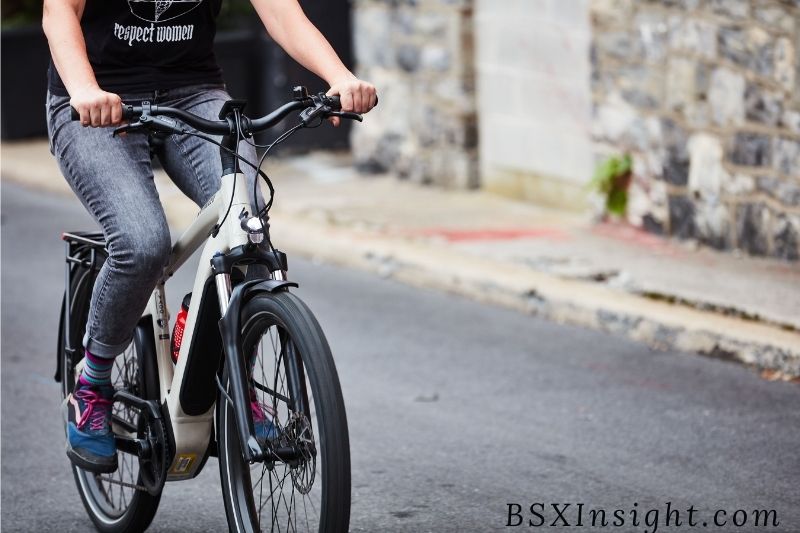
Look for the amp-hours on your battery if you need to know its capacity. The amp hours, which are connected to the amps measurement, offer you a precise estimate of how long your battery will survive.
The output of your battery is measured in amps. The amount of electricity your battery can produce in an hour at maximum voltage is measured in amp-hours, which is a measure of your battery’s capacity. Generally speaking, your bike can run longer when the amp-hours are higher.
What Do Amp-Hours Mean for a Battery?
Your bike’s battery’s amp-hours might help you estimate how long it will last before needing to be recharged. For instance, a 20 amp-hour battery will survive for 20 hours while supplying 1 amp of power. Your motor will last a shorter time if you use more energy. The battery lasts for ten hours at two amps per hour.
Consider amp-hours as the gas tank and amps as the fuel. Higher amp-hours will last longer with equivalent energy consumption and bike use.
Why Do Amp-Hours Affect E-Bikes?
To determine how long you can ride your electric bicycle on a single charge, you must consider both the amp-hours and battery voltage. The sum of them, as mentioned, provides you with watt-hours.
Because amp-hours behave like a gas tank, amps like gas, and volts like gas flow, these variables enable you to estimate the number of watt-hours needed to complete a full charge. You would find comparing models difficult if you didn’t know the amps or amp-hours for the battery in your bicycle. The optimal charger for your vehicle can be found with the aid of amps.
Along with the battery and the charger, amps are listed. Your bike will recharge considerably more quickly if the charger has higher amps. The charger’s listed amps represent how many amps it will put into the battery each hour.
For instance, a typical two-amp charger replenishes the battery with two amps per hour. A 13 amp battery would require 5.2 hours to fully recharge from 10% to 90%. The charging time is reduced to 1.5 hours if the conventional charger is swapped out for an ultra-fast one that operates at seven amps per hour.
How Eco-friendly Are Electric Bicycles?
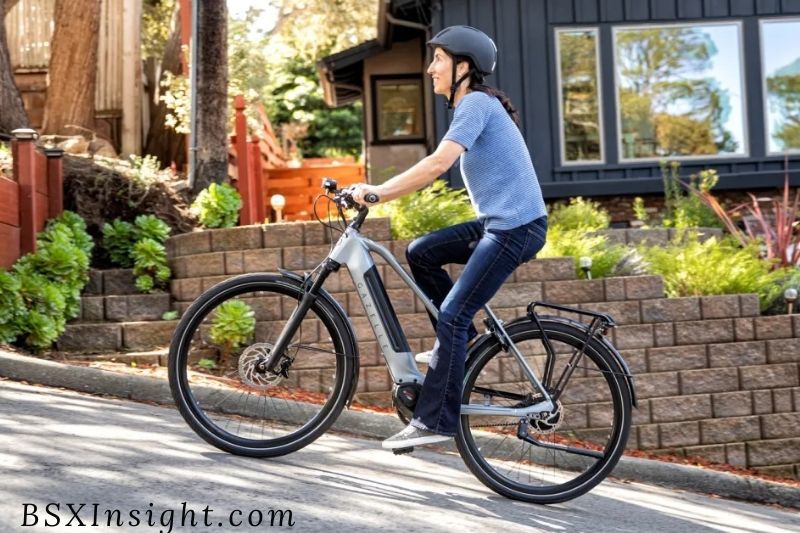
Electric bikes are without a doubt far more environmentally friendly than gasoline-powered car engines. However, that does not imply that they are faultless. Batteries can be created and disposed of in highly polluting ways.
Additionally, an electric bicycle still consumes energy, which must be obtained somehow. You may believe you are utilizing clean, environmentally friendly energy, but the electricity you use for transportation may have come from dirty, outdated coal- or nuclear-powered power plant.
Of course, if you’re lucky, it might have come from a windmill or solar panel. The environmental impact of electric bikes is nowhere near as great as that of traditional push cycles, but nothing in life is ever perfect, and as the saying goes, “the perfect is the enemy of the good.”
Electric bikes are unquestionably a positive move. Global warming may be less of an issue if everyone relied on them to go around instead of driving a car, and the globe would be cleaner and healthier.
Who Invented Electric Bikes?
This invention by Ogden Bolton, Jr. of Canton, Ohio, which was submitted in September 1895 and approved three months later, is the earliest electric bike patent that I have been able to locate at the US Patent and Trademark Office. These early diagrams show how very similar it is to contemporary electric bikes.
A hub motor on the back wheel (blue), a battery suspended from the frame (red), and a basic handlebar control are all shown in the general image on the left.
The hub motor’s more in-depth cutaway on the right shows a six-pole magnet in the middle (orange) that is fastened to the frame and an armature (yellow, composed of coiled wire) that revolves around it when the current is turned on.
Even by today’s standards, the motor is rather large; Ogdon notes that it can carry “a huge current at low voltage—for example, to transport one hundred amperes at ten volts.” 1000 watts, or roughly twice as much power as a normal modern bike hub motor.
What Types Of Motors Do Raleigh Electric Bikes Have?

When you look at the number of amp-hours listed for your bike’s battery, you can estimate how long it will last before it needs to be recharged. A battery rated at 20 amp-hours can supply one amp of current for 20 hours. Energy consumption directly correlates to the life expectancy of your motor, so keeping it high will shorten its life. The battery has a 10-hour runtime at 2 A/h.
Amp-hours represent the fuel capacity of an electric device, while individual amps supply the actual power. Assuming constant bike use and power consumption, a larger amp-hour capacity will last longer.
Two, the significance of amp-hours for electric bikes and why they matter.
How far you can go on a single charge of your electric bike depends on a number of factors, the most important of which are the amp-hours and battery voltage. Power in watt-hours is calculated by multiplying the two quantities together.
The relationship between amps (as gas) and volts (as gas flow) allows you to calculate watt-hours (as the number of hours a charge will last at full power) in the same way that a gas tank can. The comparison of bicycles would be difficult without the knowledge of amps or amp-hours for the battery. Amps are also useful for determining which charger is suitable for your vehicle.
Amps are indicated by numbers on the battery and the charger. A faster bike recharge is possible with a higher amp charger. The charger’s amp rating is an indication of the amount of current it can transfer into the battery in one hour.
A typical two-amp charger, for instance, will replenish the battery by two amps per hour. Charging a 13 amp battery from 10% to 90% would take 5.2 hours. If you swap out the standard charger for a high-velocity model that can move seven amps per hour, the charging time will drop to 1.5 hours.
What Is Size Motor Best For An E-Bike?
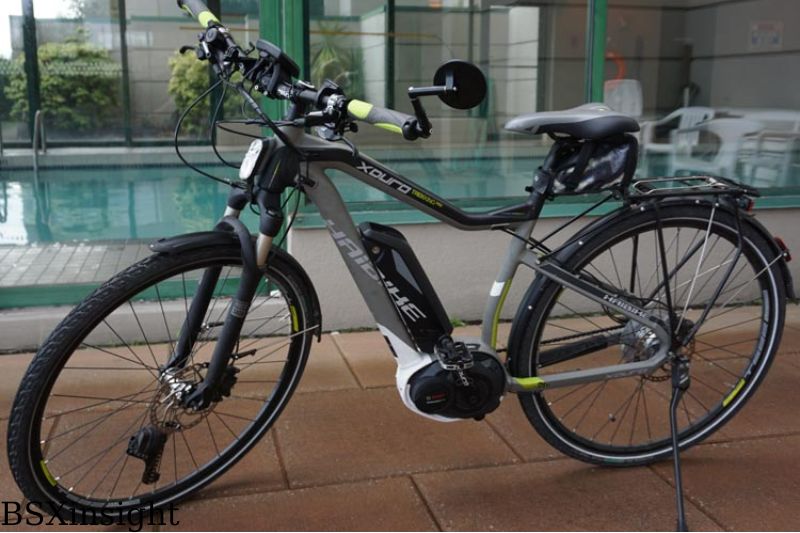
There is no definitive answer to this question as it depends on a number of factors, such as the rider’s weight, the terrain, and the desired speed. A general rule of thumb is that a motor with a higher wattage will be more powerful and thus better for hills and faster speeds, while a lower-wattage motor will be more efficient and better suited for flat terrain.
Ultimately, it is up to the rider to decide what size motor is best for their needs.
The Stow-E-Way TranzX motor, for instance, has 250 watts, making it ideal for a compact folding bike. A Bosch motor with outputs between 400 and 625w is used for our larger Motus and Centros models.
How Long Do E-Bike Hub Motors Last?
An electric bike’s hub motor should last for about 10,000 miles under normal conditions. However, that is predicated on the assumption that you will maintain your hub motor.
If you’re not using a brushless motor, the most vulnerable part of your hub motor will be the bearings.
As long as you keep your bike inside and away from moisture and rust, your hub motor should last for a very long time.
Which Is Better: Hub Motors Or Mid-Drive Motors?

The type of electric bike you have and how you plan to use it will determine whether a hub motor or a mid-drive motor is better.
Since hub motors are essentially sealed units, they require very little upkeep and are, therefore, very common. Having only one gear ratio, however, means they are better suited to flatter riding.
But mid-drive motors don’t have any gear ratios at all. Because of this, they are better able to regularly take on routes with more elevation gain.
In addition, you’ll probably find that they’re lighter than hub motors, which is especially useful if you’re trying to keep the weight of your electric bike to a minimum.
The mid-drive motor is an excellent choice if aesthetics are important to you, as it can be installed in a less obvious location than a hub motor. And if you ever need to change a tire, there’s no need to worry about lifting a heavy motor off a wheel.
In conclusion, whether a hub motor or a mid-drive motor is better depends on the rider’s intended purpose for the electric bike.
How Electric Bikes Are Charged?

Plugging an electric bike into a standard wall outlet is as easy as charging a mobile device or laptop. The charging time of a battery can range from 2 hours to 8 hours, depending on the battery’s brand and model.
The motors in Raleigh bikes are made by companies like TranzX, Suntour, Ebikemotion, and Bosch.
There will be a wide range of battery capacities and sizes available for these. The electric bike battery page has more specifics about each type. Our electric bike batteries are designed to withstand up to one thousand charges.
What Is The Procedure For Riding An Electric Bicycle?
The short answer is yes; it functions similarly to a standard bicycle. Basically, electric bikes are just standard bicycles that have a motor and battery for extra power.
What this means is that the actual method of cycling is not dissimilar from regular riding. The primary consideration is that e-bikes are heavier than conventional bicycles, which may require some adjustment time.
Our advice is to start slow and get to know the feel, handling, and weight of your electric bike when you first start riding.
Get used to using the electric assist, and before you know it, you’ll be conquering hill climbs like they’re nothing and powering away from traffic lights with ease!
How Can I Optimize The Range Of My Electric Bike?
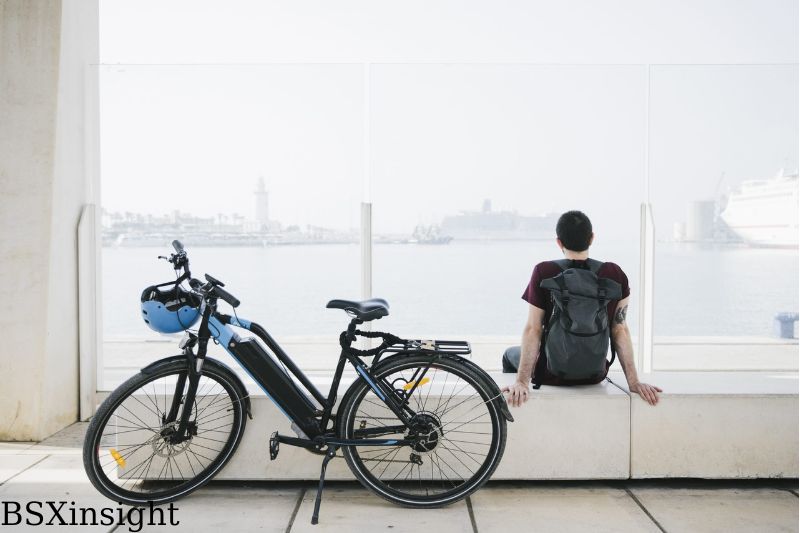
There are a couple of tips and tricks that can help boost the range that your bike will take you.
Cadence: Slow pedaling is costly in terms of energy, whereas keeping your cadence above 50 revolutions per minute can optimize your drive unit.
Weight: Carrying less luggage with you will keep the total weight of the bike down and keep your e-bike running for longer.
Starting & braking: Just like a car, when riding an e-bike, it’s more effective to travel a longer distance with a similar constant speed versus stopping and starting.
Gear shifting: Staying in the correct gear will ensure the bike is more efficient.
Tyre pressure: Always inflate tires to the maximum permissible tire pressure for the smoothest and most efficient ride.
FAQs

Are E-Bike Motors AC or DC?
Direct current (DC) motors are the norm for electric bikes. It’s because they’re cheap, easy to make, and widely available.
How fast do electric bikes go without pedaling?
Depending on the bike you have, you may have a speed limit of 20 to 28 miles per hour (mph).
Does It Take More Effort To Brake When Riding An Electric Bike?
It is important to take into account the additional mass of an electric bike when calculating stopping distance and other safety measures.
However, the increased power of electric bikes has no bearing on how forcefully you need to apply the brakes. If you get off the bike and don’t keep pedaling, the motor will stop helping you.
How does an electric bike work on hills?
Electric mountain bikes normally have a beefy motor with a high torque output to help you get up loose off-road climbs and over obstacles. Once you get to the top, the motor can be turned off to enjoy the downhill ride.
How does ebike work? Do you still need to pedal it?
Don’t kid yourself into thinking you can avoid pedaling. Even with a throttle, electric bikes still require some pedaling effort on long, steep hills. You’ll have more fun, more battery life, more motor life, and more years of your own life by pedaling.
Conclusion
Electric bikes are becoming increasingly popular, as they offer many benefits over traditional bicycles. In this article, we have outlined the basics of how electric bikes work and what you need to know before riding one. Finally, BSXInsight has provided some tips on how to maximize your range and enjoy the ride.

